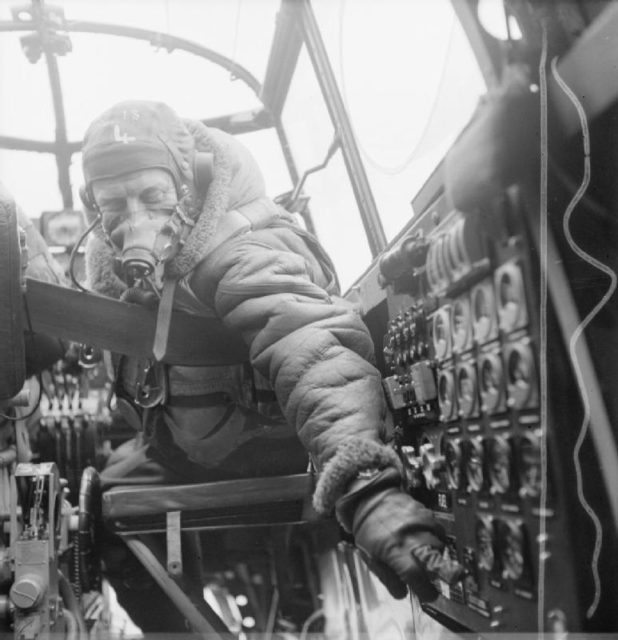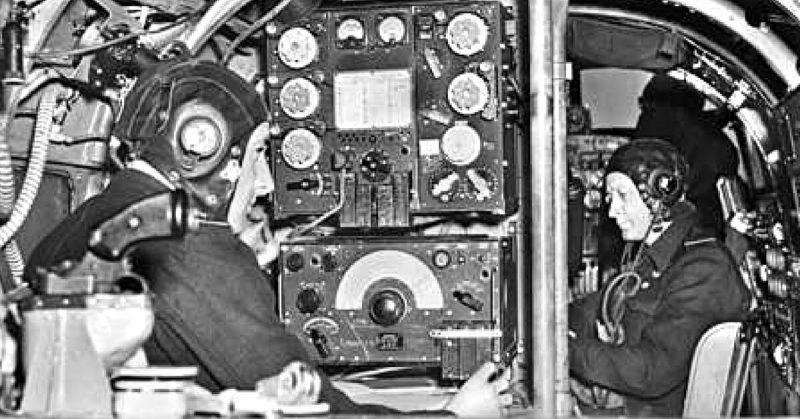Taken from Volume 1 of the CD RAF Bomber Command at War, this clip takes you into the belly of an Avro Lancaster B.Mk, I (ED586: EM-F), named F for Freddie, as it engages a German night fighter.
It was September 1943 and two BBC correspondents were on board. Wynford Vaughn Thomas and Reginald Pidsley were there to record what it was like on a dangerous flight over enemy territory.
The bombing mission was piloted by Flight Lieutenant Ken Letford. They were in flight with 315 other Lancasters and four Mosquitos, all part of the 207 Squadron of the RAF. The Mosquitos dropped spoof flares further out to distract German fighters.

Taken from Volume 1 of the CD RAF Bomber Command at War, this clip takes you into the belly of an Avro Lancaster B.Mk, I (ED586: EM-F), named F for Freddie, as it engages a German night fighter.
It was September 1943 and two BBC correspondents were on board. Wynford Vaughn Thomas and Reginald Pidsley were there to record what it was like on a dangerous flight over enemy territory.
The bombing mission was piloted by Flight Lieutenant Ken Letford. They were in flight with 315 other Lancasters and four Mosquitos, all part of the 207 Squadron of the RAF. The Mosquitos dropped spoof flares further out to distract German fighters.
The 207 was a squadron of high losses and the BBC men were aware of the dangers they faced to get this recording. That night, 422 people in Siemensstadt, Moabit, and Charlottenburg died, and 22 RAF Lancasters went down. Despite the excitement of what they had witnessed that night, Thomas and Pidsley broadcast this clip only 12 hours after landing back at the RAF base at Langar in Nottinghamshire.
Obviously, the danger of flying amongst German planes spitting bullets made getting such a recording difficult, but the atmospheric conditions made it hard as well.
This recording was made using a process that required them to cut the discs in flight from acetates and then warm them up. The altitude was such that the disc material was too brittle to cut and could not be made into a recordable disc until Pidsley warmed it up inside his jacket. The recording was then made on a BBC midget recorder resembling in both appearance and difficulty an antique gramophone.
In the recording you will hear the first six of these airmen listed:
Skipper: Ken Letford
Navigator: Con Connelly
Engineer: Charlie Stewart
Bombardier: Bill Bray
Gunner: Henry Devenish
Mid gunner: Jock Fieldhouse
Wireless Operator: Bill Sparkes
